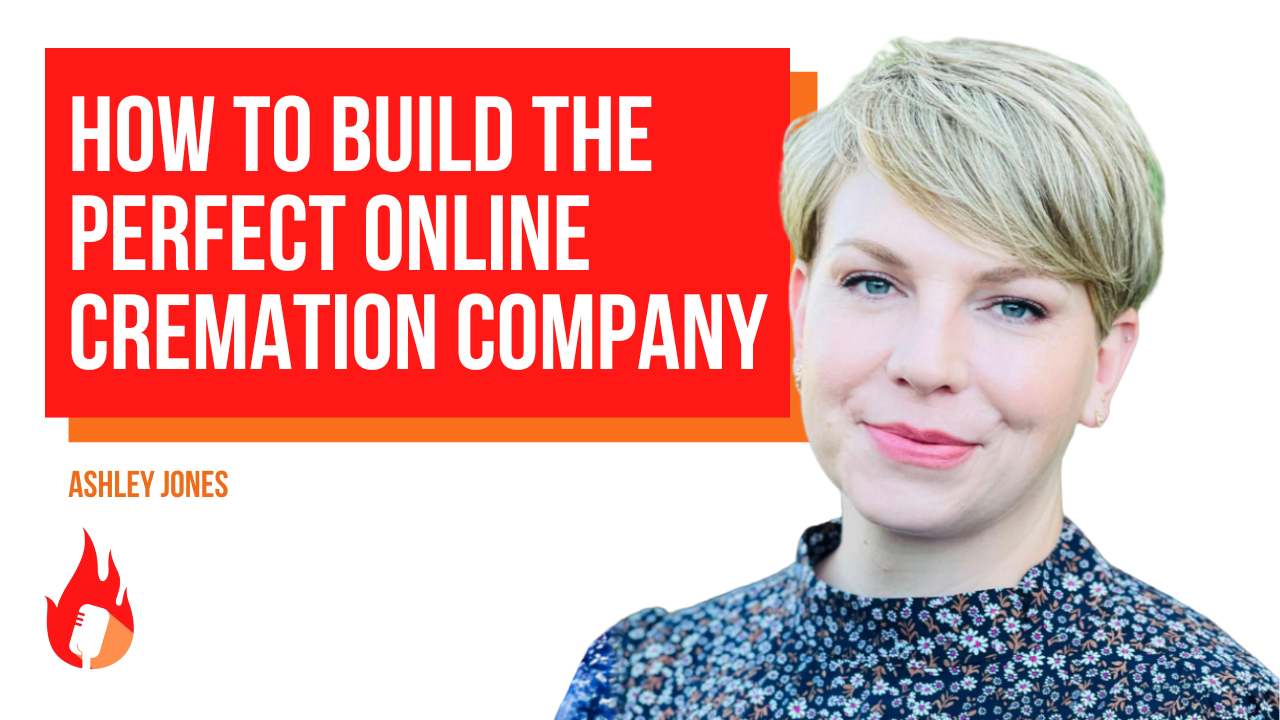If you’ve ever considered launching a cremation brand from the ground up, the latest episode of the Direct Cremation Podcast is a must-listen. Hosted by Tyler Yamasaki (CEO of Parting Pro) and Will de Michelis (funeral home consultant and former Omega Society manager), this episode features industry veteran Ashley Jones in a deep dive on everything you need to know to start, scale, and streamline a cremation business, especially in today’s digital-first world.
Together, these three have managed cremation brands that served over 10,000 families per year. Their collective experience offers priceless insight into funeral home management, cremation advertising, and creating online funeral arrangements that convert.
Here are the key takeaways that every funeral director, owner, or aspiring cremation entrepreneur should know:
Location is Everything
Before you think about your cremation website or pricing strategy, you need to understand your service area. Are you close to a major metro? Do you know how hospitals and medical examiners operate in your region? Jones emphasized the importance of “understanding the needs of your area, ” whether that’s overflow morgue space, medical examiner removals, or hospice partnerships. Local insights often lead to overlooked opportunities.
Build a Rock-Solid Digital Foundation
Your online presence is your storefront. That means:
- A user-friendly, mobile-responsive funeral website
- Claiming your Google Business, Yelp, and Facebook pages
- Investing in online cremation services with seamless digital arrangers
- Using clear, jargon-free language
As Will put it, your funeral arrangement software and website should be so intuitive “an 80-year-old should be able to complete an online arrangement without needing a phone call.”
Notably, the trio emphasized the critical role of language clarity. Industry terms like “witness cremation” or “rush cremation” often confuse families. By translating funeral-speak into consumer language, you reduce drop-offs and unnecessary phone calls—boosting conversions and satisfaction.
Create an Effortless Experience
To succeed in the low-cost cremation market, operational efficiency is key. That means:
- Paperwork should be digital and intuitive (think: streamlined cremation authorizations)
- Payments must be easy and online
- Every step, from intake to returning remains, should be well-communicated and predictable
Ashley shared examples of confusion caused by internal lingo like “cremains ready for pickup.” That language may be clear to staff, but families aren’t picking up a UPS package, they’re retrieving a loved one. This reinforces the need for customer-first thinking, not staff convenience.
Answer Every Call
One of the episode’s strongest messages: Always answer the phone.
The difference between earning or losing a case often comes down to who picked up. And not just during business hours. Having a live person, not an answering service, available after hours dramatically increases your chances of conversion. The hosts discussed hiring part-time staff, students, or even overseas reps as cost-effective solutions. When your business model relies on high-volume online cremations, every call matters.
Marketing: Paid, Organic, and Relationship-Driven
Launching a cremation brand doesn’t stop at building a site. You need a growth plan. That includes:
- Paid cremation ads via Google (ideal for at-need cases)
- Long-term hospice outreach (ideal for near-need referrals)
- Digital content and SEO (blogs, reviews, FAQs)
Tyler emphasized the importance of hospice marketing with educational materials, like advance directive flyers and kinship hierarchy summaries, along with a QR code linking directly to your online arranger. These build trust and make your business a top choice when the time comes.
6. Be All-In on Cremation
Both Ashley and Will agreed: You can’t treat your cremation brand as an afterthought. Teams that succeed have dedicated cremation staff, their own processes, and a clear cultural distinction from full-service operations.
Trying to blend your cremation brand into your existing funeral home structure often creates internal confusion, inconsistent messaging, and poor customer experiences. Specialization wins here.
As Will said,
“I want as many direct cremation families as I can sustainably handle at the price I’ve advertised.”
If that’s your mindset, you’ll build the systems, training, and experience needed to scale without burnout.
Final Thoughts: Focus + Simplicity = Success
From simplifying your funeral planning software to narrowing your service offerings, this episode underscores a core principle: you don’t need to do everything, you just need to do what you do really well.
Want proof? In-N-Out sells just burgers, fries, and shakes. Tesla only offers a few models. And yet, they’re among the most trusted brands in the country.
So why not your cremation business?
Whether you’re just starting out or looking to refine your current setup, this episode offers a blueprint for success in the online cremation space. Stream it now, take notes, and start reimagining what efficient, high-volume, family-centered funeral service can look like in 2025.
Want to dive deep? Watch the full episode here.

